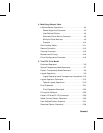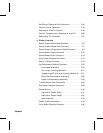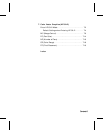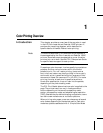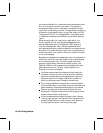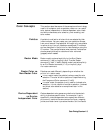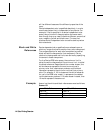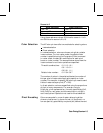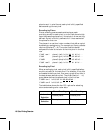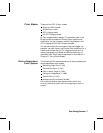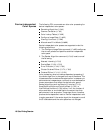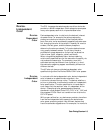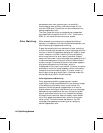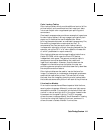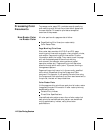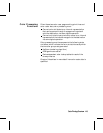
plane is sent. In pixel format, each pixel is fully specified
before sending the next pixel.
Encoding by Plane
Planar encoding uses successive data planes, each
providing one bit for each pixel in a row. Each plane builds
upon the preceding planes until the pixels in a row are fully
defined. A pixel is not fully defined until it has received all
the planes for that row.
The planes in a row form index numbers that define a pixel
by selecting a palette entry. For example, an 8-entry palette
requires 3 planes (2
3
= 8). The underlined bits below
compose the index of the color of the third pixel in the first
row.
?*b#V row 1 plane 1 (red) b1 b1
b1 b1 b1 b1 . . .
?*b#V plane 2 (grn) b2 b2
b2 b2 b2 b2 . . .
?*b#W plane 3 (blue) b3 b3
b3 b3 b3 b3 . . .
?*b#V row 2 plane 1 (red) b1 b1 b1 b1 b1 b1 . . .
Encoding by Pixel
When encoding by pixel, each pixel is fully specified before
any bits are sent for the next pixel. For example, if four bits
are needed to define a pixel, then every group of four bits in
the data stream defines a pixel. The underlined (c4 . . . c1)
group below defines the second pixel in the first row.
?*b#W row 1 b4 b3 b2 b1
c4 c3 c2 c1 . . .
?*b#W row 2 b4 b3 b2 b1 . . .
The table below shows the four PCL options for selecting
colors and encoding color raster data.
Planar Encoding Pixel Encoding
Indexed
Selection
Indexed planar Indexed pixel
Direct
Selection
Direct planar Direct pixel
1-6 Color Printing Overview1-6 Color Printing Overview



